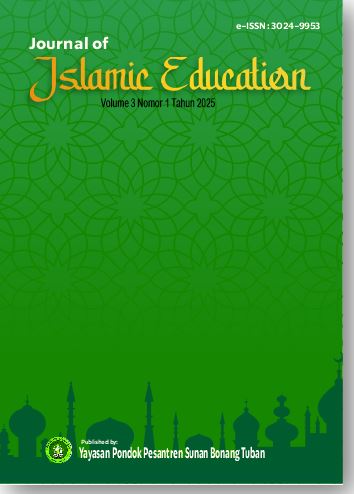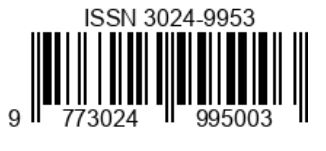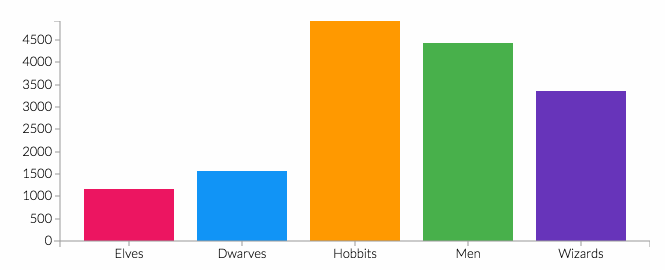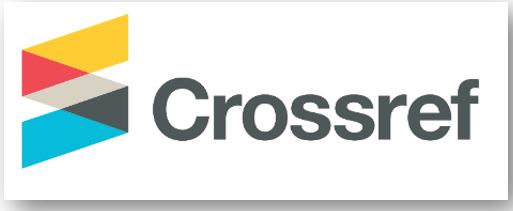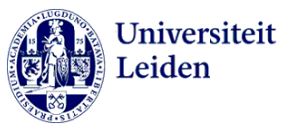Studi Komperatif Pemahaman Kedudukan Wanita Dalam Tafsir Klasik Dan Modern
DOI:
https://doi.org/10.61231/jie.v3i1.367Keywords:
Qur'anic Exegesis, Gender Equality, Classical And Modern Tafsir, Socio-Historical Analysis; Islamic FeminismAbstract
This study analyzes the comparative understanding of the position of women in classical and modern interpretations, as well as the social implications of these differences in interpretation in the context of contemporary Muslim society. The research method used is qualitative with a literature study approach, involving analysis of classical interpretation books. The results of the study indicate that classical interpretations tend to interpret verses about women textually and normatively, focusing on domestic roles and household relations, while modern interpretations use a contextual and socio-historical approach that emphasizes gender equality and relevance to social reality. The conclusion of this study reveals that the development of interpretation from classical to modern reflects a paradigm shift from a literal understanding to a holistic understanding that is adaptive to social change. This study contributes to an inclusive Islamic discourse and supports gender justice in IslamReferences
Amrona, Y. L., Nurhuda, A., Assajad, A., Al Fajri, M., & Engku Ab Rahman, E. S. Bin. (2024). The Concept of Educator from the Perspective of Prophetic Hadiths. Fahima, 3(1), 19–32. https://doi.org/https://doi.org/10.54622/fahima.v3i1.134
Anam, K. (2010). Perempuan Perspektif Tafsir Klasik Dan Kontemporer. De Jure: Jurnal Hukum dan Syar’iah, 2(2). https://doi.org/10.18860/j-fsh.v2i2.2974
Arip Ambulan, & Purba, C. S. (1945). TANTANGAN YANG DIHADAPI PEREMPUAN DI INDONESIA: Meretas Ketidakadilan Gender. 1945(Uud), 70–95.
Fadhilah, N., & Deswalantari. (2022). Nilai-Nilai Pendidikan Karakter dalam Al- Qur ’ an Surat Al -Hujurat Ayat 11-13?: Kajian Tafsir Al-Azhar Karya Hamka. 6, 13524–13534.
Janah, D., Muslihudin, M., Nurhuda, A., & Nurdiyanto, N. (2023). THE INFLUENCE OF PRODUCT QUALITY, PRICE, AND STORE ATMOSPHERE ON CONSUMER PURCHASING DECISIONS. Jurnal Ekonomi Lembaga Layanan Pendidikan Tinggi Wilayah I, 3(2), 68–78. https://doi.org/https://doi.org/10.54076/juket.v3i2.402
Kemenag. (2022). Qur’an Kemenag. Lajnah Pentashihan mushaf Al-Qur’an Gedung Bayt Al-Qur`an & Museum Istiqlal Jalan Raya Taman Mini Indonesia Indah Pintu I Jakarta Timur 13560.
Mighfar, S., Mekati Putri, A. M., & Muhammad Khadam, B. (2024). Patriarki dan Kesetaraan Gender dalam Tafsir Klasik dan Kontemporer dalam Q.S. Ali Imran Ayat 14. JURNAL PAYUNG SEKAKI, 1(1), 1–13.
Muslihudin, Putri, Y., Khoiron, M. F. Al, & Nurhuda, A. (2023). Upaya Egaliter Terhadap Diskriminasi Perempuan Infertilitas Dalam Prespektif al- Qur’an (Studi Gender Pendekatan Teologi-Sintesis). Jurnal Cendekia Ilmiah PLS, 8(1), 56–69.
Musyafak, U. H. dan N. (2017). Gender and Politics Keterlibatan Permuan dalam Pembangunan Politik. Jurnal Sawa, 12(3), 412.
Najah, N., & Fitrian, Z. (2021). Perempuan Dalam Tafsir; Upaya Pembacaan Feminis Terhadap Teks-Teks Agama. REVELATIA: Jurnal Ilmu al-Qur`an dan Tafsir, 2(1), 31–47. https://doi.org/10.19105/revelatia.v2i1.4139
Ni’am, S., Ulum, F. B., & Nurhuda, A. (2023). Hakikat Metodologi Pembelajaran Dalam Pendidikan Islam. JIS: Journal Islamic Studies, 1(3), 282–310. http://qjurnal.my.id/index.php/jis/article/view/456
Nur‘Aini, K. N., Nurhuda, A., & Huda, A. A. S. (2023). PLURALISM IN THE PERSPECTIVE OF KH ABDURRAHMAN WAHID: AN INTRODUCTION TO MULTICULTURAL EDUCATION. BIDAYAH: STUDI ILMU-ILMU KEISLAMAN, 14(2), 230–238. https://doi.org/https://doi.org/10.47498/bidayah.v14i2.2203
Nurafifah, I., Muslihudin, & Nurhuda, A. (2023). ANALISIS PENETAPAN PENGADILAN AGAMA SURABAYA NO. 0378/PDT.P/2020/PA.SBY DITINJAU DARI KEWARISAN ISLAM DAN HAK ASASI MANUSIA. JIS?: JOURNAL ISLAMIC STUDIES, 1(0378), 342–363.
Putri, Y., & Nurhuda, A. (2023a). Hasan Al-Banna’s Thought Contribution to the Concept of Islamic Education. International Journal of Contemporary Studies in Education (IJ-CSE), 2(1), 34–41.
Putri, Y., & Nurhuda, A. (2023b). Moralitas Aborsi karena Kehamilan Remaja: Ditinjau dalam Perspektif Feminisme dan Sains. Kajian Psikologi dan Kesehatan Mental, 1(1), 17–23.
Shuhufi, M., & Muhammad Amin, A. R. (2024). Perbandingan Fikih Klasik Dan Kontemporer Tentang Konsep Gender. Jurnal Ilmiah Multidisiplin Terpadu, 8(6), 845–851.
Syam, N. F. (2018). PEMAHAMAN KESETARAAN GENDER DALAM HADIS (STUDI TEKSTUAL DAN KONTEKSTUAL DALAM AL-KUTUB AS-SITTAH). In Pascasarjana UIN Sumatera Utara. UIN MEDAN.
Syukri, M., Putri, Y., & Nurhuda, A. (2023). THE ROLE OF DIGITAL LITERACY IN LEARNING MEDIA ACCORDING TO ISLAM. KASTA: Jurnal Ilmu Sosial, Agama, Budaya dan Terapan, 3(1), 33–43.
Wardiyah, J. (2021). Al-Qur’an Bertutur Tentang Perempuan Melacak Kedudukan Perempuan dalam Perspektif Al-Qur’an. Jurnal Pendidikan Guru, 2(1), 79–87. https://doi.org/10.47783/jurpendigu.v2i1.190
Yusrul, M. (2018). Kedudukan Perempuan di dalam Islam dan Problem Ketidakadilan Gender. FIHROS: Jurnal Sejarah dan Budaya, 3(1), 1–20.
Downloads
Published
How to Cite
Issue
Section
License
Copyright (c) 2025 Kamila Sofiana Rohmah, Sabila Tursina Hudan, Fajar Khoirunnisa , Abid Nurhuda, Engku Shahrulerizal Bin Engku Ab Rahman

This work is licensed under a Creative Commons Attribution 4.0 International License.
You are free to:
- Share — copy and redistribute the material in any medium or format for any purpose, even commercially.
- Adapt — remix, transform, and build upon the material for any purpose, even commercially.
- The licensor cannot revoke these freedoms as long as you follow the license terms.
Under the following terms:
- Attribution — You must give appropriate credit , provide a link to the license, and indicate if changes were made . You may do so in any reasonable manner, but not in any way that suggests the licensor endorses you or your use.
- No additional restrictions — You may not apply legal terms or technological measures that legally restrict others from doing anything the license permits.
Notices:
You do not have to comply with the license for elements of the material in the public domain or where your use is permitted by an applicable exception or limitation .
No warranties are given. The license may not give you all of the permissions necessary for your intended use. For example, other rights such as publicity, privacy, or moral rights may limit how you use the material.

